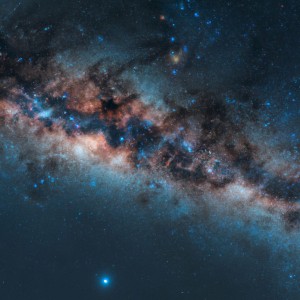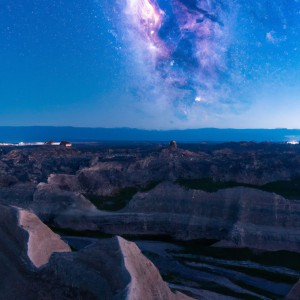The universe is a vast and wondrous place, filled with mystery and marvels. From the smallest subatomic particles to the largest galaxies, there are countless phenomena that continue to fascinate scientists and enthusiasts alike. Here are just ten of the many wonders that make our universe such an amazing place.
1. Black Holes

At the heart of many galaxies, there are massive black holes that warp time and space itself. These ultra-dense objects are the remnants of collapsed stars, and their gravity is so intense that nothing, not even light, can escape their grasp.
2. The Big Bang
According to the most widely accepted cosmological model, the universe began with a massive explosion called the Big Bang. This event, which occurred roughly 13.8 billion years ago, set into motion the formation of galaxies, stars, planets, and everything we see today.
3. Dark Matter
Despite making up the majority of the universe's mass, dark matter is invisible and remains one of the biggest mysteries in modern science. While we cannot directly detect it, we know it exists because of its gravitational effects on visible matter.
4. Neutron Stars
When a star collapses in on itself, it can form a neutron star. These incredibly dense objects are only a few miles across but contain the mass of multiple suns. They also have extremely strong magnetic fields that can emit intense radiation, such as X-rays and gamma rays.
5. Cosmic Microwave Background Radiation
The cosmic microwave background radiation (CMB) is a faint glow of light that permeates the universe. It is thought to be leftover radiation from the Big Bang and provides crucial insights into the early universe's properties.
6. Gravitational Waves
The existence of gravitational waves was predicted by Einstein's theory of relativity, and they were finally detected for the first time in 2015. These ripples in space-time are produced by the collisions of massive objects, such as black holes or neutron stars.
7. Exoplanets
In recent years, the discovery of exoplanets has revolutionized our understanding of the universe. These planets orbit stars outside of our solar system and come in a variety of sizes, compositions, and orbits.
8. Gamma Ray Bursts
Gamma-ray bursts are some of the most energetic events in the universe, releasing more energy in a few seconds than the sun will emit over its entire lifetime. They are thought to be produced by the collisions of neutron stars or the collapse of massive stars.
9. White Dwarfs
When a star runs out of fuel, it will eventually burn out and become a white dwarf. These incredibly hot and dense objects are roughly the size of the Earth but contain the mass of a sun. They emit their remaining energy as visible light and can be some of the brightest objects in the sky.
10. Cosmic Inflation
Shortly after the Big Bang, the universe underwent a period of rapid expansion known as inflation. This period of exponential growth occurred in a fraction of a second but had a profound effect on the structure and properties of the universe we see today.
In conclusion, the universe is a place filled with incredible wonder and mystery. From black holes and gamma-ray bursts to cosmic inflation and the Big Bang, our understanding of the universe is constantly evolving and expanding. And with new discoveries being made all the time, it's safe to say that we have only just scratched the surface of what the universe has in store.













评论